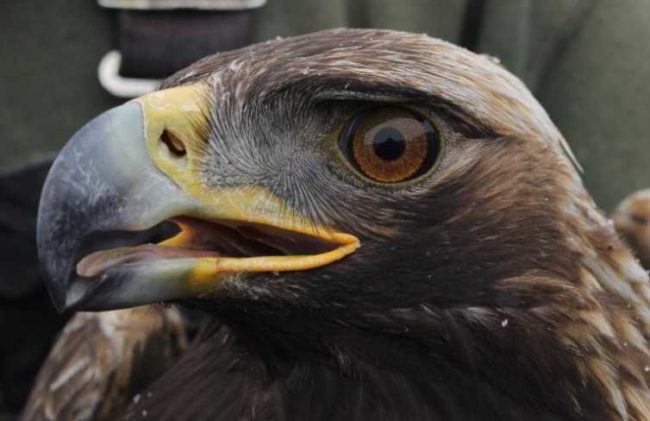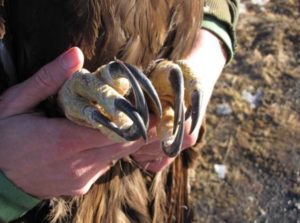
The number of golden eagles that spend summers in Alaska is more than three times the previous estimate, biologists just determined.
At least 12,700 of the 12-pound predatory birds migrate to Alaska each summer in order to create new golden eagles. That number is about one-quarter of all the golden eagles in North America.
Several Alaska scientists and one from HawkWatch International in Utah calculated the new estimate to improve upon an old one (about 4,000 birds) that scientists thought was too low. That was especially the case after biologists Carol McIntyre and Steve Lewis in 2014 counted more than 1,300 migrating golden eagles from just one spot over nine days of watching in the Mentasta Mountains.
Authors of the December, 2021, paper, Golden Eagle Abundance in Alaska, are not saying there is a recent golden eagle boom in Alaska. The new number, reported in the Journal of Raptor Research, is what they believe to be a more accurate estimate.
Travis Booms is a biologist at the Alaska Department of Fish and Game in Fairbanks who helped design and execute the study, based in southcentral Alaska. Knowing roughly how many animals exist helps managers find out if that creature is doing well or needs special protection.
Chocolate-brown Golden eagles are about the same size as bald eagles. Instead of congregating around rivers like bald eagles, goldens prefer open country of mountain slopes and tundra landscapes.
There, the birds use curved talons the length of human fingers to puncture their prey, which includes ground squirrels, ptarmigan, snowshoe hares and sometimes even caribou and muskoxen calves.

To come up with a better count of the golden eagles visiting Alaska in summer, Booms and his coworkers chose to look at birds that fly a corridor between the Chugach and Talkeetna mountains.
A good place to set up was near Gunsight Mountain, about halfway between Palmer and Glennallen. There, for a few weeks beginning in mid-March from 2014 to 2018, the biologists and technicians counted golden eagles returning northward from their wintering spots.
They also captured the birds by setting out unsalvageable road kill carcasses, and then firing a gun that threw a net over hungry migrating eagles that landed on the bait.
Once they caught an eagle, the biologists rushed up and cut the net away. They then placed a leather hood over the eagle’s head, which somehow calmed it.
They also placed a pair of leather booties over the bird’s feet.
“Those talons can go right through your forearm,” Booms said, noting that golden eagles, unlike bald eagles, rarely strike with their beaks.
During those four spring seasons, the biologists fitted 53 birds with backpack transmitters about half the size of a deck of cards.
Then came what Booms considers one of the most memorable moments of his career. He or another biologist would toss the giant bird in the air and feel the rush of air from the downstrokes of wings as wide as their open arms.
The transmitters — six of which are still working in December 2021 — allowed the biologists to determine that golden eagles that migrate along the Glenn Highway route spend summers in the mountains around Anchorage, in the central and western Alaska Range, and as far west as the Kilbuck Mountains near Bethel. Right now, in early December 2021, most of the birds have returned to the western U.S., Canada and Mexico.
The biologists extrapolated the numbers Gunsight Mountain group they studied to come up with the new Alaska estimate of the majestic bird that relies on the state’s vast open spaces.





